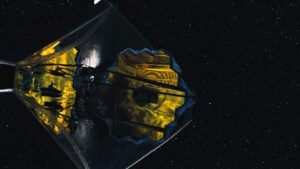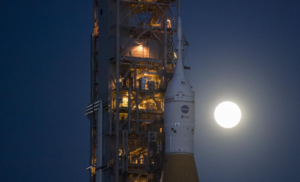
NASA Just Unveiled The Future of Supersonic Travel!
Over two decades ago in 2003, the supersonic Concorde airliner completed its final flight due to a number of different complications. Among that list were high operating costs, general demand, and of course, noise. Just days ago, however, NASA in partnership with Lockheed Martin, unveiled a new supersonic plane named the X-59.
This specific plane is intended to gather data that NASA believes could revolutionize air travel, and eventually pave the way for a new generation of commercial aircraft that can travel faster than the speed of sound. With this plane now ready, the agency plans to begin actual flights and frequent testing in the near future. Here I will go more in-depth into the design of this aircraft, what it could mean for the future of travel, upcoming tests, and more.
Quiet Supersonic Travel

Recently, on January 12th, during a NASA livestream, the agency pulled back the curtain revealing the flight-ready X-59 and its new paint job. Here you could see a primarily white body, a NASA “sonic blue” underside, and red accents on the wings. Not only does the paint add cosmetic value, but it also serves a purpose. The paint helps to protect the aircraft from moisture and corrosion and includes key safety markings to assist with ground and flight operations.
At its core, the X-59 is at the center of NASA’s Quesst mission, which focuses on providing data to help regulators reconsider rules that prohibit commercial supersonic flight over land. It’s important to point out that for 50 years, the U.S. and other nations have prohibited such flights because of the disturbance caused by loud, startling sonic booms on the communities below. With that in mind, the X-59 is expected to fly at 1.4 times the speed of sound, or 925 mph. However, in a quote, NASA said, “Its design, shaping and technologies will allow the aircraft to achieve these speeds while generating a quieter sonic thump.”
In other words, a significant amount of work has gone into the design of this aircraft to reduce the noise it creates traveling at such high speeds. What’s so exciting about the recent rollout is that we are only months away from real flight tests. In a statement just released by NASA the agency says, “With rollout complete, the Quesst team will shift to its next steps in preparation for first flight: integrated systems testing, engine runs, and taxi testing for the X-59. The aircraft is set to take off for the first time later this year, followed by its first quiet supersonic flight. The Quesst team will conduct several of the aircraft’s flight tests at Skunk Works before transferring it to NASA’s Armstrong Flight Research Center in Edwards, California, which will serve as its base of operations” they said.
As partially mentioned before, this project is a joint effort between NASA and specifically Lockheed Martin’s Skunk Works division, which is one of the company’s Advanced Development Programs. For the last few years they have been working to develop, manufacture, and now actually test hardware on the X-59. When talking about the recent unveiling, NASA Deputy Administrator Pam Melroy commented, “This is a major accomplishment made possible only through the hard work and ingenuity from NASA and the entire X-59 team. In just a few short years we’ve gone from an ambitious concept to reality. NASA’s X-59 will help change the way we travel, bringing us closer together in much less time” she said.
With sound being such an important factor when determining the success of this project, NASA has some unique testing plans for the future. Besides what I mentioned prior, the agency will fly the aircraft over several to-be-selected cities across the U.S., collecting input about the sound the X-59 generates and how people perceive it. NASA will provide that data to the Federal Aviation Administration and international regulators. This means in the future people could expect a flyover in some major cities around the country.
The X-59 Design

Looking at the X-59, it’s obviously a very unique aircraft. At 99.7 feet (30.4 meters) long and 29.5 feet (9 meters) wide, the aircraft’s shape and the technological advancements it houses are all supposed to make quiet supersonic flight possible. The X-59’s thin, tapered nose accounts for almost a third of its length and will break up the shock waves that would ordinarily result in a supersonic aircraft causing a sonic boom. Due to this configuration, the cockpit is located almost halfway down the length of the aircraft – and does not have a forward-facing window. Instead, the Quesst team developed the eXternal Vision System, a series of high-resolution cameras feeding a 4K monitor in the cockpit.
Specifically, the 4K monitor displays stitched images from two cameras outside the aircraft combined with terrain data from an advanced computing system. Granted, the two portals and traditional canopy are real windows and help the pilot see the horizon on the sides. The displays below the XVS will provide a variety of aircraft systems and trajectory data for the pilot to safely fly. The agency highlights that this tech is one of several innovative solutions to help ensure the X-59’s design shape reduces a sonic boom to a gentle thump heard by people on the ground.
Focusing more on the problem of sonic booms, a good portion of time was spent working on this exact issue. A sonic boom happens when the shock waves from an object traveling through the air faster than the speed of sound merge together before they reach the ground. Sonic booms generate enormous amounts of sound energy, about 110 decibels, like the sound of an explosion.
The design is intended to reduce and redirect that sound upward and away from the ground. Early last year, NASA researchers used computational fluid dynamics to create what is, essentially, a virtual wind tunnel showing incredible aerodynamic detail. In the image, the parallel lines extending outward from the aircraft depict acoustic shockwaves the X-59 is predicted to create during supersonic flight that will result in a quieter sonic “thump”. The agency pointed out how the aircraft’s long, thin aerodynamic nose pierces through the air – a key design for quieting the boom.
The engine is another important piece of the vehicle that will be tested. Back in November 2022, the installation of the F414-GE-100 engine took place at Lockheed Martin’s Skunk Works facility in California. The 13-foot-long engine from General Electric Aviation packs 22,000 pounds of propulsion energy and will power the X-59 as it flies at speeds up to Mach 1.4 and altitudes around 55,000 feet.
What’s interesting is that the X-59 combines a long list of new tech with established projects. This has created a few ups and downs throughout its development but also led it to where it is today. For example, the X-59 combines new technology with systems and components from multiple, established aircraft, such as its landing gear from an F-16 and its life-support system adapted from an F-15.
The agency also pointed out late last year that as part of the demands of developing this unique aircraft, the Quesst team was working through several technical challenges identified over the course of 2023, when the X-59 had been scheduled to make its first flight. Extra time was needed to fully integrate systems into the aircraft and ensure they worked together as expected. The team also resolved intermittent issues with some of the safety-redundant computers that control the aircraft’s systems. Thankfully, practically all of these issues have been fixed and the agency is now just about ready to begin consistent testing. If successful, we could see some big changes within the aerospace industry as regulations are altered thanks to new tech.
Fifty years ago, the federal government banned all civilian supersonic flights over land. The rule prohibits non-military aircraft from flying faster than sound so their resulting sonic booms won’t startle the public below or concern them about potential property damage. In a statement, NASA said, “Moving ahead, to lift the ban and enable a viable market for supersonic air travel over land, the idea is that regulators would base new rules on a different standard than before. The speed limit created in 1973 didn’t consider the possibility that an airplane could fly supersonic yet did not create sonic booms that could affect anyone below. It was a fair assessment at the time because the technology required to make that happen didn’t exist yet. “And now it does,” Peter Coen said, NASA’s Quesst mission integration manager. “So, instead of a rule based solely on speed, we are proposing the rule be based on sound. If the sound of a supersonic flight isn’t loud enough to bother anyone below, there’s no reason why the airplane can’t be flying supersonic.”
All this being said, the agency was also quoted saying, “Still, public acceptance of supersonic aircraft flying overhead today goes far beyond sonic boom noise. Airport noise, emissions, and climate impact are all factors that still need to be addressed. With its government, industry, and academic partners, NASA is working to solve those challenges as well. But none of that will matter until the first step – lifting the half-century-old ban on supersonic flight over land – is accomplished. “We are very excited to be making this big step forward, but we recognize that more needs to be done,” Coen said.
Conclusion
NASA just revealed the completed X-59 that is not far away from flying over different cities within the United States. That will be just one test of many to see how well the sound has been eliminated and whether or not it has a feasible future. We will have to wait and see how it progresses and the impact it has on the space industry.



